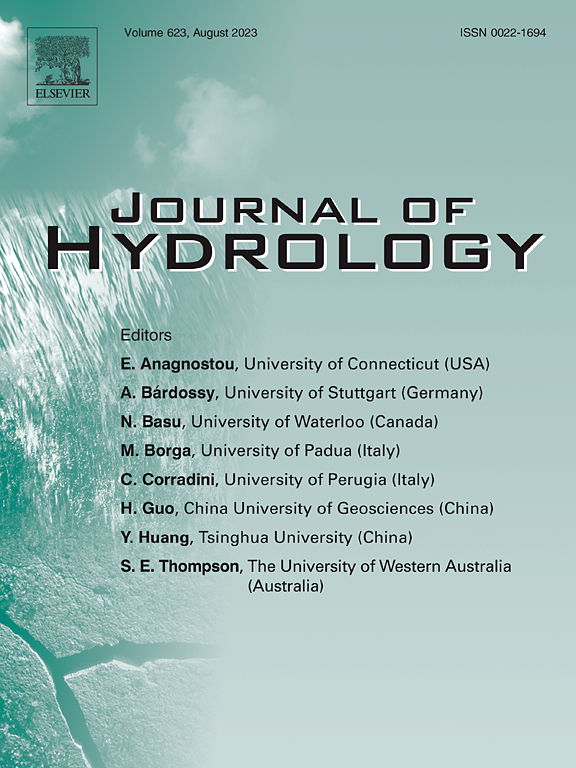Regime shift in river-tide dynamics of longitudinal and transverse channels over the Pearl River Delta, China
IF 6.3
1区 地球科学
Q1 ENGINEERING, CIVIL
引用次数: 0
Abstract
Understanding the impact of upstream river discharge on river-tide dynamics is vital for sustainable freshwater management in river deltas, including flood control, salinity intrusion, navigation, etc. In this study, we applied the R_TIDE data-driven analysis tool to the Pearl River Delta (PRD), China, to quantify the stepwise alterations in river-tide dynamics, focusing on changes in water levels, tidal amplitudes, phases, and damping rates. The results identify three distinct periods (Pre-Development Period: 1965–1988, Transitional Period: 1989–1998, Post-Development Period: 1999–2017), which correspond to shifts in river-tide interactions, as indicated by changes in water levels and tidal amplitudes. These changes reflect alterations in effective friction, driven by the nonlinear modulation of river discharge and morphology, significantly altering the relationship between tidal damping rate and river discharge. This regime shift suggests a significant transformation in the balance between riverine and tidal forces, especially in the transverse channels, highlighting their roles in flood regulation and tidal storage. The successful application of the R_TIDE in the PRD provides insights for sustainable water resources management and highlights its potential applicability to other estuaries subject to intensive human interventions worldwide.
珠江三角洲纵向和横向河道的河潮动态变化
了解上游河流流量对河流潮汐动态的影响对河流三角洲的可持续淡水管理至关重要,包括洪水控制、盐度入侵、航行等。本文以珠江三角洲为研究对象,利用R_TIDE数据驱动分析工具,从水位、潮汐幅值、相位和阻尼率等方面分析了珠江三角洲河潮动态的逐步变化。研究结果确定了三个不同的时期(前发展期:1965-1988年,过渡期:1989-1998年,后发展期:1999-2017年),这些时期对应于河流-潮汐相互作用的变化,如水位和潮汐振幅的变化。这些变化反映了有效摩擦的变化,由河流流量和形态的非线性调制驱动,显著改变了潮汐阻尼率与河流流量的关系。这种变化表明河流和潮汐力之间的平衡发生了重大变化,特别是在横向渠道中,突出了它们在洪水调节和潮汐储存中的作用。R_TIDE在珠江三角洲的成功应用为可持续水资源管理提供了见解,并突出了其在世界范围内受人类密集干预的其他河口的潜在适用性。
本文章由计算机程序翻译,如有差异,请以英文原文为准。
求助全文
约1分钟内获得全文
求助全文
来源期刊

Journal of Hydrology
地学-地球科学综合
CiteScore
11.00
自引率
12.50%
发文量
1309
审稿时长
7.5 months
期刊介绍:
The Journal of Hydrology publishes original research papers and comprehensive reviews in all the subfields of the hydrological sciences including water based management and policy issues that impact on economics and society. These comprise, but are not limited to the physical, chemical, biogeochemical, stochastic and systems aspects of surface and groundwater hydrology, hydrometeorology and hydrogeology. Relevant topics incorporating the insights and methodologies of disciplines such as climatology, water resource systems, hydraulics, agrohydrology, geomorphology, soil science, instrumentation and remote sensing, civil and environmental engineering are included. Social science perspectives on hydrological problems such as resource and ecological economics, environmental sociology, psychology and behavioural science, management and policy analysis are also invited. Multi-and interdisciplinary analyses of hydrological problems are within scope. The science published in the Journal of Hydrology is relevant to catchment scales rather than exclusively to a local scale or site.
 求助内容:
求助内容: 应助结果提醒方式:
应助结果提醒方式:


